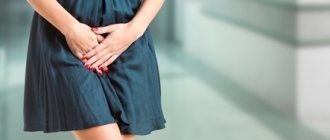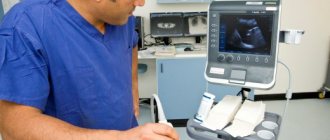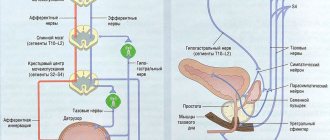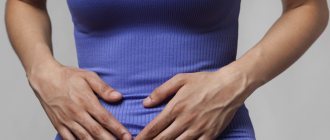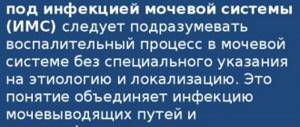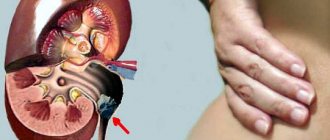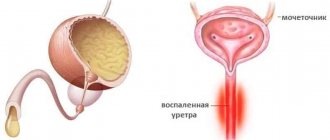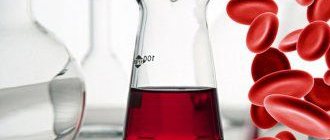A very unpleasant condition that can occur in a man is the impossibility of emptying the bladder naturally. It is full of urine, but for a certain reason it lingers in it and does not exit through the urethra. The medical term for this disorder is called ischuria. There are several forms of urinary obstruction, which differ in the uniqueness of their manifestation. It mainly affects men, often in old age. Why and what to do when urine does not pass? Only the treating specialist can answer your question. In case of acute pain associated with urination, an ambulance is called and urgent hospitalization is required.
The function of the genitourinary system is responsible for collecting and removing urine from the body:
Urine does not pass
- the kidneys filter the blood, removing excess fluid and other substances;
- the ureters transport urine into the bladder;
- The bladder is a reservoir that transports urine to the urethra for excretion.
The urine reservoir holds 350 ml. liquids. Normally, the period between passing urine is 2 – 5 hours, depending on the fluid consumed. When a man’s body is healthy, during urination the muscle fibers of the bladder receive a signal, they relax, and unimpeded emptying occurs.
Reasons for the development of pathology
The main factor that provokes problems with urination is benign and malignant prostate tumors. Overgrown tissue of the gland leads to compression and obstruction of the urethra.
When the prostate tissue is swollen, pressure on the walls of the urethra interferes with the free outflow of urine, fluid stagnation develops, and the inflammatory process intensifies. With prostate adenoma, doctors detect an acute form of urine retention in 1–7% of patients.
Other causes of ischuria in men:
- blockage of the urethra by a stone or blood clot,
- weak urine flow, readings below 12 ml/s,
- narrowing of the urethra during an active inflammatory process,
- prostate injury,
- inflammation and development of prostate abscess,
- prostate cancer,
- consequences of operations on the bladder, bean-shaped organs, prostate gland,
- prolonged bed rest after surgical treatment,
- pathologies of the nervous system that provoke disturbances in the tone of the bladder, sphincters and urethra.
Problems with fluid excretion in most cases develop in old age, in patients whose prostate volume exceeds 40 ml. With sedentary work, persistent constipation, and addiction to alcohol, ischuria is diagnosed more often in men. An important point for determining the risk of prostate cancer is that the PSA level is above 2.5 ng/ml. Ishuria code according to the ICD – 10 – R33.
What does mucus in urine mean in men and what diseases does it indicate? We have the answer!
Learn about the symptoms and treatment methods for multicystic kidney disease in a child from this article.
Etiology of cutting up the battle
The reasons for the development of inflammation can be divided into obstructive, inflammatory-infectious, pharmacological, neurological and others.
(div. table 1). Table 1. Etiology of shading
| Cause the development of the cutting process | People | Women | Offensive articles |
| Obstructive | Benign prostatic hyperplasia, stenosis of the urethral meatus, paraphimosis, compression devices, tension on the penis, phimosis, prostate cancer | Prolapse of the pelvic organs (cystocele, rectocele, prolapse of the uterus); new developments of the pelvis (oncogynecological tumors, uterine fibroids, ovarian cysts); position of the vaginal uterus in retroversion | Aneurysm, stones or swelling in the urinary tract, fecal blockage, innovation in the ShKK or behind the urethra, urethral strictures, foreign bodies, stones or swelling of the urethra |
| Fire-infectious | Balanitis, prostate abscess, prostatitis | Gastrointestinal vulvovaginitis, sclerosis of the lichen following vaginal lichen planus, vaginal pemphigus | Bulharciosis, cystitis, echinococosis, Guien-Barré syndrome, herpes simplex virus, Lyme disease, periurethral abscess, transverse myelitis, tuberculous cystitis, urethritis, herpes simplex virus |
| Others | Trauma, fracture or tearing of the tissue of the penis | Post-polar obstruction, urethral sphincter dysfunction (Fowler's syndrome) | Rupture of the posterior urethra due to trauma to the perineum, postoperative deformation, psychogenic causes |
| Note. Pharmacological and neurological causes of blockage are presented in Table 1. 2 and 3. | |||
First signs and symptoms
Acute urinary retention (ischuria) is dangerous for the body. Men should know the first symptoms of a dangerous condition in order to see a doctor in time.
It is important to pay attention to several factors:
- a gradual decrease in the amount of urine excreted per urination,
- pain and pain when urinating, difficulty emptying the bladder,
- against the background of the inflammatory process, the temperature rises, weakness appears, headache, nausea and vomiting are possible,
- pain in the groin area with pressure from a fluid-filled bladder,
- discomfort and tension in the pubic area with a full bladder,
- Sexual function decreases.
Obstructive causes of shading
The shading of the cut may result from obstructive changes in the lower sectoid lines near the neck of the sectum or distal to it. Obstruction of the urinary tract can be caused by internal factors (for example, enlargement of the prostate, stones in the urinary tract, urethral stricture) or external factors (for example, compression of the cervix of the urinary tract by a swollen uterus or SCC), protease The most common cause is benign prostatic hyperplasia (BPH). The results of a 2-year follow-up (Choong S. et al., 2000) involving 310 people demonstrated that in 53% of patients the blockage was caused by BPH, and in the other 23% by other obstructive factors. In the United States, BPH causes approximately 2 million visits to the doctor and more than 250,000 surgical procedures.
Blockage of the section can be caused by other obstructive disorders, such as prostate cancer, phimosis, paraphimosis, compression devices, tension on the penis in men, cystocele or rectocele in women. External compression of the cervix of the sechovogo mikhur as a result of prolapse of the uterus, the presence of large swellings of the pelvic organs, ShKK or other space, fecal blockage can also cause blockage of the mesh. In men and women, strictures, stones or foreign objects in the urethra can completely block the passage of the urethra. With swollen fur, the swelling of the skin often results from the presence of blood clots, and illness often manifests itself as hematuria without pain.
Types and forms of the disease
Negative signs depend on the form of ischuria:
- Spicy. Urinary retention develops suddenly, a painful and frequent urge to urinate appears, but it is almost impossible to remove urine. The bladder is full; exceeding the critical size can lead to rupture of the organ. As a result, fluid with dissolved toxins penetrates into the abdominal cavity, and peritonitis develops. The accumulation of harmful substances quickly provokes poisoning of the body, and the patient’s condition worsens. Without urgent help, death is possible.
- Chronic. In the incomplete form of ischuria, the patient empties the bladder, but not completely, stagnant residues increase inflammation, and as the pathology progresses, the symptoms become more pronounced. When the full form of the disease develops, catheterization of the bladder is required to remove urine: the man is not able to independently control the physiological process.
- Paradoxical ischuria. This form of pathology develops when the bladder is greatly stretched. The process of urination is disrupted, it is difficult to urinate, but urine is involuntarily released drop by drop from the urethra.
Treatment of urinary retention
Treatment of urinary retention is carried out in several stages and first of all consists of emergency assistance in the form of emptying the bladder. This task is accomplished by catheterization—the drainage of urine by inserting a catheter into the urethra. Another method is cystostomy, most often used in men when it is impossible to insert a catheter. It is a puncture or puncture of the bladder to install a tube.
The next stage of treatment is aimed at the causes that caused the pathology and preventing the development of inflammatory processes.
Drug treatment
Drug treatment depends on the diagnosis that led to urinary retention, and also helps relieve pain and facilitate the removal of fluid from the body. Thus, antispasmodics for urinary retention are used in the case of reflex, medical or mechanical ischuria. They relax the bladder sphincter muscles. It could be no-spa, drotaverine.
Drotaverine - exists in tablets and injection solutions. The dose is prescribed individually, the tablets are swallowed without chewing, regardless of food. The recommended dose for children 2-6 years old is a quarter of a whole quarter once or twice a day. Older children (6-12 years old) - 1-2 tablets with the same frequency. Adolescents over 12 years of age and adults are prescribed the same amount, but more often - 2-3 times a day. Injections are administered intramuscularly (2-4 ml 1-3 times for adults, children over 12 - 1-2 ml). Isolated cases of side effects such as nausea, stool disorders, headache, and tachycardia were observed. Contraindicated in people with hypersensitivity to the components of the drug, with renal, hepatic, heart failure, arterial hypertension.
For urinary retention, diuretics are also used - diuretics furosemide, hypothiazide, Lasix, veroshpiron.
Furosemide is available in tablets and liquid ampoules, which are administered intramuscularly and intravenously. The daily dose is 40 mg, if necessary, it can be increased 2-4 times and divided into 2 doses. The drug can cause nausea, itching and redness of the skin, thirst, depression, and low blood pressure. Contraindicated in case of mechanical blockage of the urinary tract, in the first half of pregnancy.
In most cases, α-blockers are prescribed for urinary retention. This may be tamsulosin or alfuzosin.
Alfuzosin - film-coated tablets (5 mg). Prescribed to men with prostate adenoma. A dose of 2.5 mg three times per day is recommended, for patients over 65 years of age - twice, in the morning and in the evening. Side effects may appear as skin rashes, swelling, tinnitus, dizziness, tachycardia, diarrhea. Not recommended for hypersensitivity to the components of the product, severe liver and kidney diseases. Not prescribed for women with angina pectoris and coronary artery disease.
Antibiotics will prevent the development of infectious processes due to prolonged use of the catheter. In modern pharmacology, there are many such drugs; to determine the required ones, tests are carried out for sensitivity to pathogens. Antibiotics of different generations can be prescribed: oxacillin, ampicillin, ampiox, cefixime - tetracycline; cefazolin, cefaclor, cefepin - cephelasporins; ofloxacin,
lomefloxacin, norfloxacin - fluoroquinolones; azithromycin, clarithromycin - macrolides; streptomycin, amikacin - aminoglycoses; tetracycline, chlortetracycline - tetracyclines.
Ofloxacin is a broad-spectrum antibiotic, tablets. The dosage is one tablet 2 times a day. The course of treatment is 7-10 days. An allergic reaction is possible, manifested by a rash and itching, nausea, diarrhea, vomiting, anorexia, and changes in the blood count. Contraindicated for children under 15 years of age, pregnant and lactating women, and epileptics.
In the case of neurogenic causes of pathology, prozerin and aceclidine are used.
Aceclidine - has a liquid dosage form for subcutaneous administration. 1-2 ml of 0.2% solution is administered once. If necessary, repeat 2-3 times at half-hour intervals. Contraindicated for pregnant women, lactating women, epileptics, patients with stomach bleeding, and inflammation of the abdominal cavity. Side effects may occur, such as allergies and conjunctivitis.
Vitamins
A well-known antiseptic among vitamins is ascorbic acid; it activates the functions of the urinary organs, therefore it will help in the treatment of ischuria. Vitamins A, B, E will also boost immunity along with vitamin C.
Physiotherapeutic treatment
Physiological treatment includes those methods that will be effective for a particular case of the disease. With the neurogenic nature of ischuria, they resort to electrical stimulation, both superficial and intravesical, acupuncture, and electrophoresis. To treat prostate adenoma, along with drug treatment, physiological methods such as massage, peat and silt mud as applications, inducto-, magnetic-, laser therapy, and physical therapy are also used.
Exercise therapy for urinary retention involves strengthening the pelvic muscles and training the bladder. The well-known Kegel method involves slowly squeezing muscles, alternating rapid contractions and relaxations, and pushing out, simulating labor or efforts during bowel movements.
Traditional treatment
Alternative treatment can be used only after consultation with a doctor. These methods include relieving bladder spasms using warm compresses and relaxing baths. If there are no contraindications to thermal procedures, then you can run a warm bath, lie down and strain, and try to urinate. Warm compresses on the perineum, lumbar back, and lower abdomen will help relax the muscles of the urinary tract. The lower abdomen is warmed with grated raw onion wrapped in gauze. Tinctures, teas, and decoctions of herbs that have a diuretic effect are also used.
Herbal treatment
In nature, there are many natural diuretics that are useful in the fight against pathologies of the bladder and kidneys. These are plants such as celery, parsley, birch buds, horsetail, bear's ears, dill seeds, chicory, etc. Here are a few recipes:
- 50g of green oat stalks, pour 1 liter of water, boil for 20 minutes, drink half a glass three times a day;
- a tablespoon of rowan berries in a glass of boiling water, leave, drink 2 tablespoons 3 times a day;
- Grind the celery root in a meat grinder, squeeze out the juice, take two spoons several times a day before meals.
Homeopathy
Homeopathy is also used in the complex treatment of problems associated with urinary retention. Homeopathic medicines are taken half an hour before meals or an hour after.
Aconite - has the form of grains, packaged in bottles. The dose for acute conditions is 8 granules 5 times a day, after a few days the frequency of administration is reduced to three times. The course of treatment according to this scheme is 2 weeks, and the same amount - twice a day. An adverse reaction of the body in the form of an allergy is possible. Contraindications include low blood pressure and hypersensitivity to the drug.
Arnica - drops prescribed for urinary retention due to bruises and injuries. The recommended dose is 10 drops directly under the tongue or per spoon of water. Before swallowing, you must hold it in your mouth. Not for use in children, pregnant women or during lactation. Contraindicated for people allergic to the drug. There were isolated side effects: dyspepsia, allergic manifestations.
Belladonna - homeopathic granules in C6 dilution. Taken two days later, 3 pieces at a time. No side effects were identified.
Camphor is a 20% oil solution in ampoules for subcutaneous administration. The dose of the drug is 1-5 ml, before administration it must be warmed to body temperature. If it enters the lumen of a vessel, it may become blocked. Itching, urticaria, and convulsions may occur. Contraindicated for epileptics, those with heart problems, and aneurysms.
Surgery
Surgical treatment will be required in the presence of tumors, prostate adenoma, narrowing of the foreskin, stones in the ureter and all other pathologies that lead to blockage of the urethra and the ineffectiveness of conservative treatment. Endoscopic manipulations are also possible with funnel-shaped excision of the bladder, sphincter incision, plastic surgery of bladder tissue - methods that facilitate its emptying.
Diagnostics
In the chronic form of the pathology, many men do not seek medical help until a critical moment occurs with the development of complete ischuria. The acute form of urinary retention is easy to recognize: the patient cannot urinate without inserting a catheter, general health deteriorates sharply, and symptoms of intoxication appear.
Diagnostics is necessary to determine the factor that provoked the disruption of urine outflow. Often men do not suspect that the cause lies in a tumor, stones or compression of the urethra.
The urologist prescribes:
- laboratory tests of urine and blood, mandatory, bacterial culture if an infectious pathology is suspected,
- urography,
- cystoscopy,
- Ultrasound examination of the bladder cavity, prostate tissue, kidneys.
On a note! When palpating the pubic area, the doctor reveals an increased size of the bladder; pressing on this area provokes pain due to excess accumulated fluid. An important indicator is the volume of fluid received and excreted (data per day), ultrasound examination of the bladder after urination. If the amount of residual urine exceeds 200 ml, then the urologist diagnoses urinary retention.
People's first aid kit
Urinary retention can also be treated with folk remedies.
The principle of catheterization
If a person experiences severe pain due to the disease, you can try to alleviate his suffering in the following way. Take a pinch of horsetail, place the herb in a chamber pot and pour boiling water over it. You should sit on the potty for half an hour, and then be sure to lie down under a blanket and sweat. Repeat the procedure the next day. If there is no improvement, then add horsetail lotions to the “baths”, which should be applied to sore spots.
Great inconvenience and unpleasant sensations are caused to a person by urological pathological processes, due to which he is forced to frequently run to the toilet, but even more suffering is caused by the inability to empty his bowels when the bladder is full. Urinary retention in medicine is called ischuria and is more common in men than in children and women.
Effective Treatment Options
In acute forms of ischuria, it is important to provide first aid and carry out catheterization of the bladder. Calling an ambulance in a timely manner prevents severe complications and reduces the risk of intoxication and peritonitis in case of organ rupture.
After the bladder is emptied, antibacterial compounds and drugs that reduce signs of intoxication are prescribed. It is important to eliminate the inflammatory process and normalize the functioning of the bean-shaped organs and bladder. In critical situations, hemostatic and anti-shock procedures are required.
Treatment is carried out taking into account the factor that provoked ischuria:
- crush and remove stones,
- remove a tumor in the prostate tissue,
- urethral stenting is performed to normalize urine outflow,
- remove blood clots or stones blocking the urethra,
- in critical situations, emergency surgery is performed for acute ischuria, if a blockage of the urethra is detected or the tissues of the inflamed prostate have grown so large that surgical treatment is indispensable,
- prescribe drugs that reduce muscle hypertonicity in neurogenic dysfunction,
Find out the instructions for using Norbactin tablets for cystitis and other urological diseases.
The reasons for frequent urination in women through their noses and the treatment of the disease are written in this article.
Go to https://elesto.ru/mochevoj/mocheispuskanie/diurez.html and read about the features of determining daily diuresis in men and women.
Other reasons for the development of shading
Postoperative complications.
Family doctors often suffer from stagnation of the blood after surgical interventions, in the development of which pain, trauma, excessive excess of blood flow and the use of drugs (especially narcotics) play a role. The frequency of development of the cut after surgery on the rectum can be 70% of cases, after prosthetics of the cervical tendon - 78%, after gynecological operations - 25% (Iorio R. et al., 2005; Hershberg er JM et al., 2003). The amount of bleeding after hemorrhoidectomy can be changed by replacing spinal anesthesia with selective pudendal block (Kim J. et al., 2005). Further research (GoNULLu NN et al., 1999) has shown that the incidence of cervical seizures in the postoperative period in humans can be reduced by administering prazosin in the perioperative period.
Shading of the section is associated with vaginosis.
The shading of the section during the hour of vacancy is primarily due to the compression of the internal meatus of the urethra to the position of the vaginal uterus in retroversion, most often focusing on the 16th gestation (Cardozo L. et al., 19 97). The frequency of development of shading after canopies falls to 1.7–17.9%, and the risk factors include first canopies, instrumental births, three-way canopies and cesarean roses (Glavind K. et al., 2003; Yip SK et al., 2005). Follow-up results Olofsson CI et al. (1997) in a study of more than 3,300 breeds demonstrated that wives that received epidural anesthesia exhibited a greater degree of decreased secrecy than those that were bred without such anesthesia.
Injury.
The shading of the cut can be caused by a severe urethral irritation, a member or a cut of the mikhur. The rupture of the urinary tract and the urethra are repaired in case of a fracture of the pelvic cysts or traumatic instrumental closure.
Possible complications
If left untreated, ischuria can lead to serious consequences:
- In stagnant urine, pathogenic bacteria actively multiply, inflammation appears, toxins from the urinary tract penetrate into other parts of the body, pyelonephritis and cystitis develop. Blood poisoning (urosepsis) is especially dangerous for the patient, a condition that threatens health and life,
- with a noticeable overflow of urine, full of ischuria, the bladder stretches, there is a possibility of rupture of an important organ. Urine released into the tissue contains harmful microorganisms, an inflammatory process develops,
- the inability to remove accumulated urine reduces the functional capacity of the kidneys. Urine retention in the absence of therapy provokes the development of renal failure, a serious condition in which the bean-shaped organs do not work fully or cannot accumulate, filter and remove fluid. In the terminal stage of acute and chronic renal failure, transplantation of natural filters is required, until a donor is found, you will have to receive chronic hemodialysis, extrarenal blood purification from toxins and nitrogenous breakdown products.
Preventive recommendations
It is important to know what factors increase the risk of urinary retention. The more attention a man pays to the health of the prostate, kidneys, and bladder, the lower the risk of problems with the genitourinary system. Untreated, chronic pathologies of the urinary tract and genital organs often provoke dangerous complications, including prostate cancer.
10 rules for the prevention of ischuria:
- Avoid hypothermia and frequent heavy lifting.
- Stop drinking strong alcohol and stop smoking. It is important to get rid of habits and exposure to poisons that impair blood supply to important organs and tissues, reduce the elasticity of blood vessels, and poison the body.
- Stop taking medications uncontrollably.
- Move more to prevent phlebitis of hemorrhoidal veins.
- Be less nervous, in case of frequent stressful situations, take herbal sedatives, drink courses of lemon balm, valerian root, mint, and chamomile.
- Pay attention to signs of prostate inflammation.
- Visit a urologist every year (even if there is no discomfort in the urinary tract), take a general urine test, and do an ultrasound of the kidneys, prostate, and bladder.
- Follow the rules for preventing inflammation after surgical treatment of pathologies of the genitourinary system.
- Prevent sexually transmitted diseases, use a condom.
- Empty the bladder in a timely manner, do not tolerate a strong urge to empty the organ.
When ischuria develops, men should know what to do to prevent dangerous consequences. Acute urine retention often leads to intoxication, stretching of the bladder walls, and in severe cases, rupture of an important organ is possible. It is important to know what consequences of urinary retention are possible in the absence of adequate therapy. One of the negative manifestations is the deterioration of men’s health, problems with potency. Measures to prevent ischuria are quite simple; compliance with the rules prevents many physiological and psychological problems.
Video. A specialist from the Moscow Doctor clinic on the causes and methods of treating urinary retention in men:
What to do for prevention?
Preventive measures are aimed at preventing the disease of ischuria and include the implementation of the following rules:
- Limit alcohol consumption.
- Avoiding hypothermia.
- Men over 40 years of age should visit a urologist who treats urological diseases at least once a year. Women need to visit a gynecologist more often - 2 times a year.
- Treat inflammatory processes in the body and diseases of the genitourinary organs in a timely manner (prevent the development of chronic diseases).
- Avoid injury to the genitourinary organs.
- Before using any medications, you should first consult with your doctor so as not to provoke a side effect such as urinary retention.
Prevention is necessary for every person, no matter whether he is healthy or sick. Any pathology of the urination process affecting men, women or children requires immediate contact with a medical facility. Timely diagnosis and prescribing a specific course of treatment will prevent negative health consequences.
